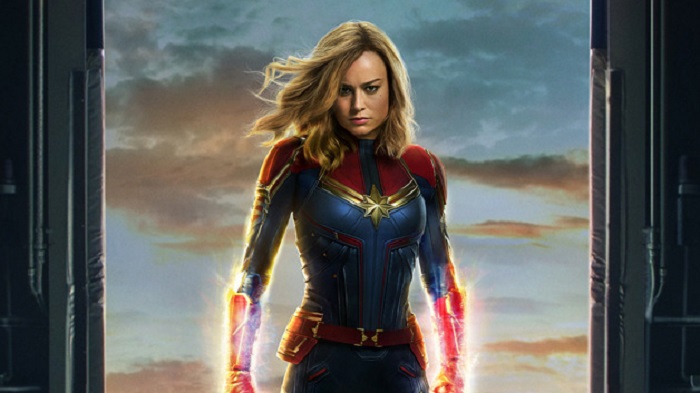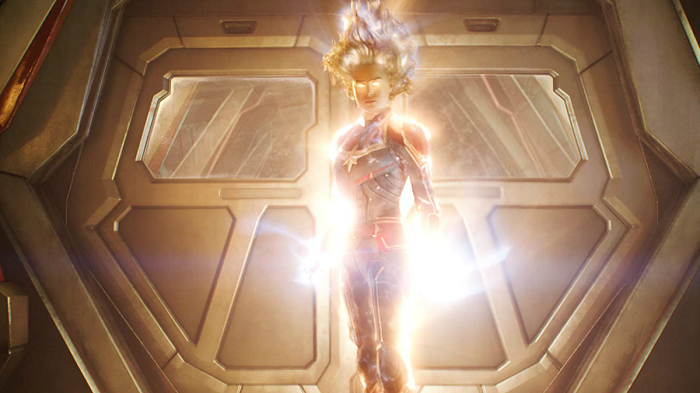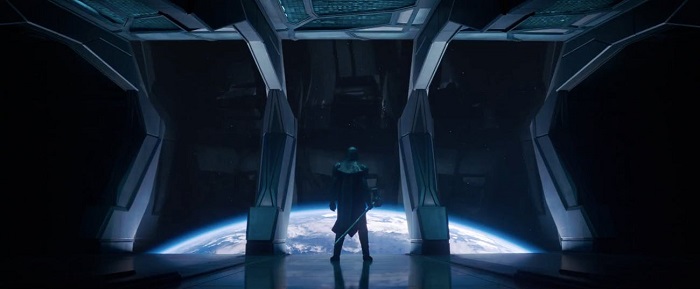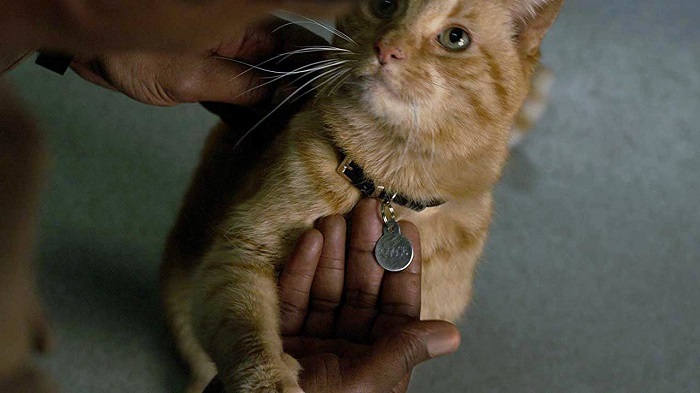
Anna Boden and Ryan Fleck’s Captain Marvel finally gave us a glimpse into the making of the most powerful Avenger yet.
Fans have been on pins and needles to know more about the character since watching Nick Fury’s outmoded pager send her a distress signal in the aftermath of Thanos’ snap. And suffice to say, it was worth the wait.
Captain Marvel beautifully crafted Carol Danvers’ journey from a Kree soldier to a superhero, elevated by flashy and glaring visual effects. Industrial Light and Magic’s Craig Hammock, who served as the VFX supervisor of the film, has further insights to give into the same.
Having delivered about 300 shots for the film, he starts off by explaining the creation of Captain Marvel’s glow: “It is called the binary effect. As you can imagine adding intense lighting on and around a hero character is very difficult to make feel well integrated to both her and the environment around her. On the photography side of things the Marvel visual effects supervisor Chris Townsend did a great job of working with the production crew to make sure there were lighting instruments on set to give passes with a base of lighting for reference as well as in some cases having bands of LED lights that could be worn for the blast moments.”

Whenever Captain Marvel charges up her powers, she’s veiled in a thick sheath of golden rays, which Hammock says is similar to an electric field. And pulling it off has apparently been a great ordeal, especially in that scene where she’s floating across Ronan The Accuser’s spaceship.
“We end up running as many as 12 separate simulations from her and over her geometry to generate the layers of complexity that you see in the final binary effect. They have various forces that control them, but the dominant one behaves similar to an electrical field. This produces thin strands of energy that peel off of her and arc away,” he said.
“In extreme shots where she needed to show extra power or control, like the Ronan ship faceoff, we tweak it slightly to enhance the idea of electromagnetic forces. We selected areas on her to treat as magnetic poles, then we transition from the randomly generated areas of repulsion to the very controlled magnetic flow lines. This gives the impression that she can control and channel the energy at will.”
Marvel fans are well versed with Ronan the Accuser, who previously appeared in Guardians of the Galaxy Volume One. But only eagle-eyed followers would have recognised certain subtle differences in that spaceship to the one that he pilots in the James Gunn-movie.
Hammock explains, “In looking at the GOTG Ronan ship it felt like it was constructed of an almost iron ore material that was very slab like. We took that idea and explored other minerals to derive a basic design concept. After looking through lots of natural large stone reference we thought that slate would work well with accents of gold pyrite. This gave it a sculptural quality and a way to feel like alien technology, but still somehow raw and oppressive.

“We also chose to dress Ronan’s specific ship with a pattern based on meteoric iron in the Kree teal color. Once we started blocking in shots the need for Ronan to have a more recognizable silhouette came up so we did an overall twist of the wing tips that also nudged it a little toward the shape of the GOTG ship. Making unique alien ships is harder than you think, but the approach to this one was very rewarding and ended up one of my favorite ships I’ve seen.”
Like every other movie in the MCU, Captain Marvel too was lit with rib-tickling humor and wisecracks. But a large chunk of that entertainment was imbued by none other than Goose the cat, which became one of the biggest talking points of the film.
A “Flerkin” as Danvers clarifies Fury, the alien creature had a strong resemblance to Garfield, but proved to be more notorious and powerful than anyone could imagine.
So how was the cat brought alive on screen? “Goose is actually played by four cats on set. They all had different specialties that made them useful for different scenes. The hero cat, Reggie, was used as often as possible and was the one the digital asset was based on. He was scanned and then another VFX Vendor named Trixter was tasked with building the CG version and doing the majority of the CG Goose shots in the film. They took the scans and the copious amounts of photographic reference and built the asset and then sent it to us at ILM as reference to build our own version. ILM was tasked with the shots where the tentacled Flerkin is seen.

“We basically had to recreate what Trixter had done to match the cat and then design and build a way for a set of giant tentacles to come out and wreak havoc. The Flerkin has a visual representation from the comics that we needed to work with. The idea was to keep the general intent of the style. After several rounds of concept art it landed with a design that has a hard spikey rigid outer skin and more fleshy inner skin covered by tiny suction cups. Then the whole thing gets covered in digital saliva that makes it extra sloppy and adds to the comedic moments,” he elucidated.
“The cat movements are based on real world reference that our animators looked at. When the Flerkin comes out we unlock the cats jaw and allow the skin to stretch tight as it opens its mouth like a snake.”
